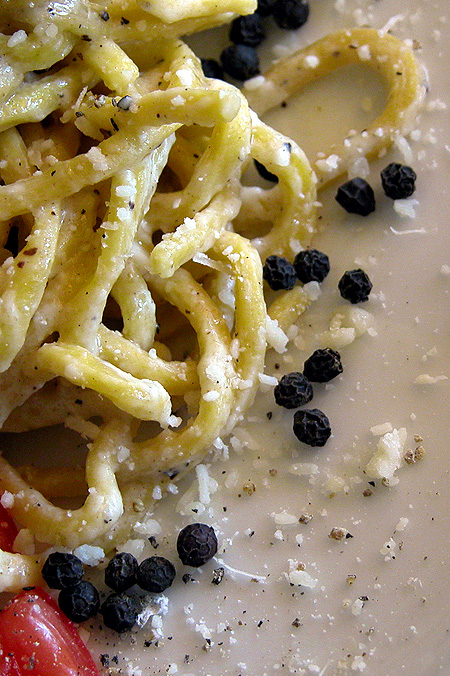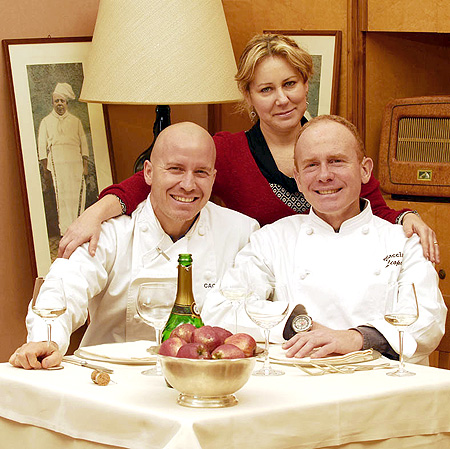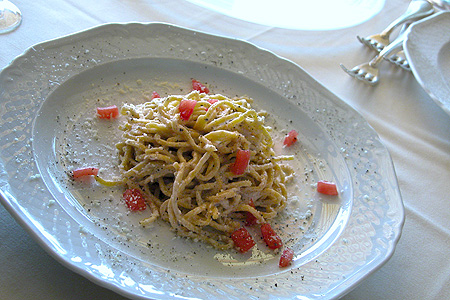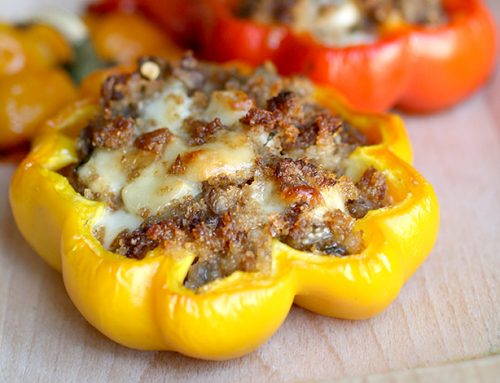I met Paolo Cacciani three years ago, when we took care of the graphics for his cookbook, Il gusto di Roma – The taste of Rome, which you can see here, on our graphic studio website.
He was in the kitchen, and kept tossing off dishes to be photographed, and I assure you that they were not touched-up to look good – i.e. coated with glycerin and hand cream or with other nasty stuff to get the glossy effect.
His dishes didn’t need it, as they were looking already very attractive.
Maybe I shouldn’t say this, because it’s not very professional, but right after taking photos we couldn’t resist and tried everything he brought, and I am not one who tastes everything, since I have been eating only organic food for fifteen years (and you know how difficult it is to eat out when you follow such principles …).
Anyway, once you try a dish prepared by Paolo, you won’t ever forget it.
photography by Alfredo Cacciani
It may be his ability, his experience, or it may be that his level of detail is on the verge of making him a maniac, it may be that he his super-careful about the ingredients (one of his key rules is “the source material is all”)… actually, everyone of his courses was a work of art.
All the flavors merged well with each other. I may not be a food critic, but I am a true pain in the neck (the term is sweetened) in life, but especially when it comes to food :-)
And then there’s the meat issue: among other things, Paolo is one of the few people from whom I have heard that most important is that you must personally know the origin of the animals, what they eat, and the fact that they must be bred in peace and butchered without making them suffer.
Among the thousands of things that Paolo does – besides producing oil and wine by himself, he took the time to create an association called “Cuisine of the Roman countryside” (you can find some info here and here, there’s also a member list of other restaurant owners) which has as its cornerstone the appreciation of territory, the quest for the “quality deposits” surrounding us, the attempt to develop, along with other restaurants, quality products normally left on the sidelines for trade reasons, and dulcis in fundo, the effort to communicate to as many people as possible their desire to be “aware”.
The restaurant, which Paolo manages with his sister Caterina and his brother Leo, was founded in 1922 (!).
On the website you will find all sorts of news, there is a take away service (!) and the opportunity to participate in their cooking classes (can’t tell you how much I’d love to do it!! :-)
So it is with immense pleasure that I inaugurate with Paolo this column about chefs. I tell you, the first thing you will notice about him is an amazing energy, one of those rare people who never seem tired.
I think this is a feature of those who are so lucky and brave to do a job they deeply love.
I could have chosen one from many of his recipes, but eventually I selected the simplest and most traditional, to prove that even the dishes cooked with very few ingredients can be spectacular in both appearance and flavor, if you make them properly and if you carefully choose the ingredients. Moreover, this dish comes from a very ancient tradition of the Castelli Romani.
OK now, enough babbling, I leave the floor to our Chef :-)
Cheese and pepper is a fun and historic dish from Castelli; it’s a sturdy dish, without compromises, we cannot expect a delicate taste.
You just need to have at home a little piece of Pecorino Romano and a little pepper, and the recipe is done, you can eat it any time, day or night, enjoying the good company of a nice glass of wine…
The peculiarity of this dish comes from some small tips:
- the pepper: “Sarawak” from Rimbas, a Malaysian village financed by the “Excellent and fair” initiative – ground right then and there, of course;
- pecorino romano DOP, exactly the same as the legionaries brought with them when they marched across Europe.
The ingredients must always be perfect, even more when the dishes are simple.
Ingredients:
500 grams spaghetti
8 tablespoons freshly grated pecorino romano
4 small spoonfuls of black pepper “Sarawak” just ground
salt
Cook the spaghetti in plenty of water, which must be quite sweet, not too salty.
While the pasta cooks, start making the sauce: in an aluminum bowl, mix – away from the fire – the pecorino cheese, pepper and a scoopful of pasta water, to obtain a mixture which should not be lumpy, more like ricotta cheese.
Drain the pasta when it’s al dente and then whisk with a wooden spoon, always away from the fire, with energetic movements and fast, in order to merge well the pasta with the mixture. This process is essential, you must have a good “hand”.
If the temperature of the room is cold, it could be useful to whisk it bain-marie, in order to keep the right temperature.
Serve at once, in previously well heated plates, add a sprinkling of pecorino fresco to make them visually appealing.
Variations:
– If you want a more delicate flavor, use 5 tablespoons of pecorino romano and 3 tablespoons of good parmesan cheese;
– Spaghetti can be replaced easily with Tonnarelli or rigatoncini;
– If you want a “flaming” effect, add chunks of unseasoned tomatoes “concassè” (which means dipped in boiling water, skinned and without seeds – basically just the clean pulp).
Cacciani hotel restaurant
via A. Diaz, 13
00044 Frascati (Rome)
info@cacciani.it
+39 06.9401991
+39 06.9420378








Scrivi un commento